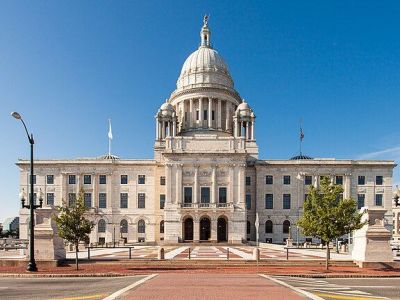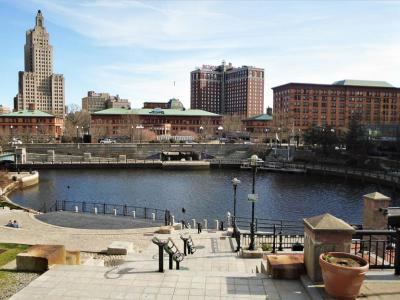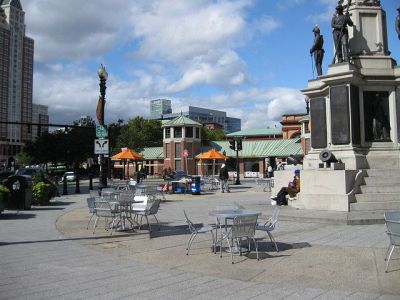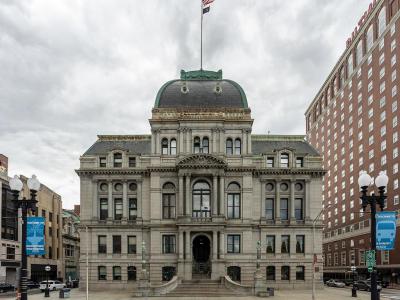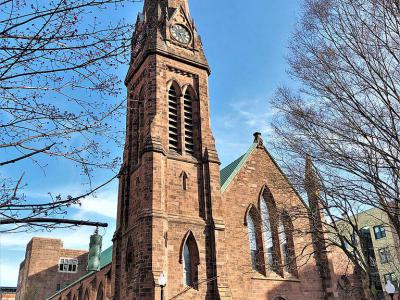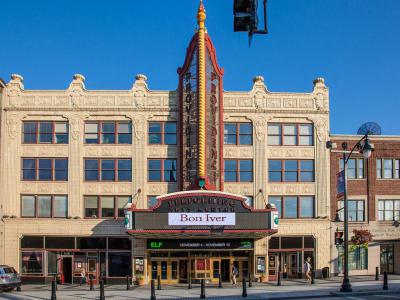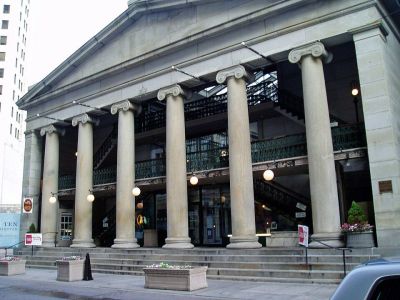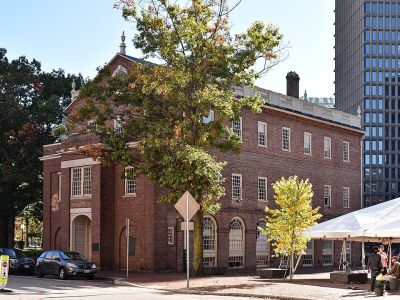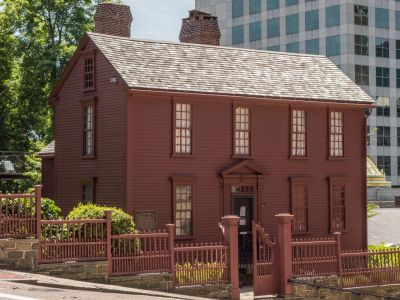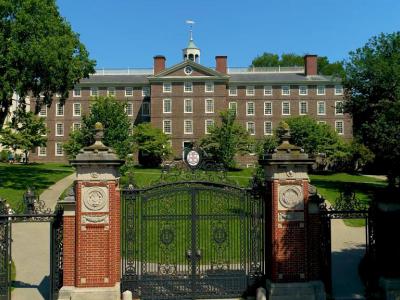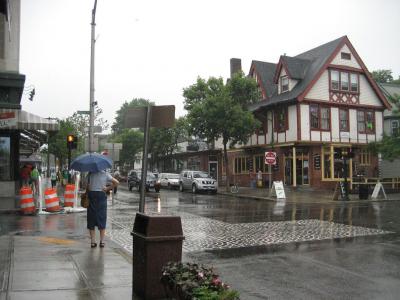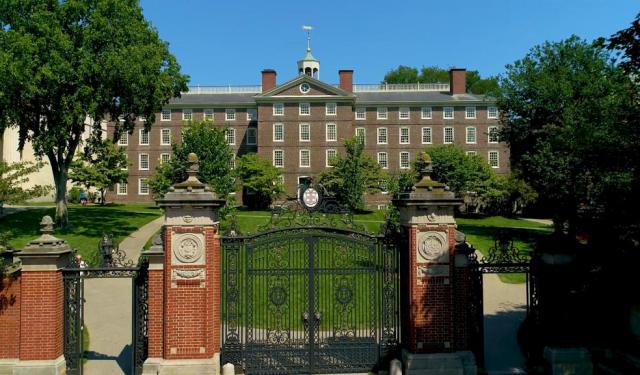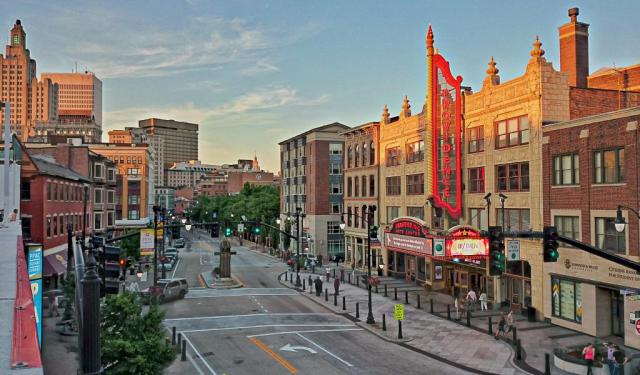
Providence Introduction Walking Tour (Self Guided), Providence
Along the banks of the Providence River sits one of New England’s oldest and most storied settlements. Founded in 1636 by Roger Williams, a bold dissenter fleeing Massachusetts Bay Colony, it initially began as a sanctuary of religious freedom. Williams believed this haven was revealed through divine mercy—hence the name “Providence.” Over time, the city grew from its humble beginnings into one of the original Thirteen Colonies that helped form the United States.
In the 18th and early 19th centuries, the city flourished as a maritime powerhouse and later played a key role in America’s industrial revolution. Rivers powered textile mills, while the Atlantic’s proximity made Providence an ideal spot for shipping and trade. By the 19th century, manufacturing had transformed it into a thriving urban center, complete with factories, workshops, and an influx of immigrants that fueled its growing economy.
Cultural and educational institutions soon followed suit. Brown University, established in 1764, and the Rhode Island School of Design, founded in 1877, emerged as pillars of innovation, cementing Providence’s reputation as a city of learning and creativity. In the 20th century, the city faced its share of struggles, including economic slowdowns and suburban migration, but rebounded with ambitious urban renewal projects. The River Relocation Project in the 1980s unveiled the city’s hidden waterways, resulting in the creation of Waterplace Park and the dazzling WaterFire displays.
Once crowned “the jewelry capital of the world” during the mid-20th century, Providence also boasts an enduring artistic legacy. Today, visitors can explore iconic landmarks such as the Providence Performing Arts Center, the historic Westminster Arcade, and the world-class Rhode Island School of Design Museum. Stroll through preserved neighborhoods like College Hill, and you’ll find some of the nation’s oldest buildings. Top it all off with a taste of the city’s eclectic culinary scene, and you’ll quickly see why Providence continues to charm both residents and newcomers alike.
Why not experience it all yourself? Follow our self-guided walk, which takes you through the city’s major attractions, uncovering the stories, sights, and sounds that make this city so uniquely unforgettable.
In the 18th and early 19th centuries, the city flourished as a maritime powerhouse and later played a key role in America’s industrial revolution. Rivers powered textile mills, while the Atlantic’s proximity made Providence an ideal spot for shipping and trade. By the 19th century, manufacturing had transformed it into a thriving urban center, complete with factories, workshops, and an influx of immigrants that fueled its growing economy.
Cultural and educational institutions soon followed suit. Brown University, established in 1764, and the Rhode Island School of Design, founded in 1877, emerged as pillars of innovation, cementing Providence’s reputation as a city of learning and creativity. In the 20th century, the city faced its share of struggles, including economic slowdowns and suburban migration, but rebounded with ambitious urban renewal projects. The River Relocation Project in the 1980s unveiled the city’s hidden waterways, resulting in the creation of Waterplace Park and the dazzling WaterFire displays.
Once crowned “the jewelry capital of the world” during the mid-20th century, Providence also boasts an enduring artistic legacy. Today, visitors can explore iconic landmarks such as the Providence Performing Arts Center, the historic Westminster Arcade, and the world-class Rhode Island School of Design Museum. Stroll through preserved neighborhoods like College Hill, and you’ll find some of the nation’s oldest buildings. Top it all off with a taste of the city’s eclectic culinary scene, and you’ll quickly see why Providence continues to charm both residents and newcomers alike.
Why not experience it all yourself? Follow our self-guided walk, which takes you through the city’s major attractions, uncovering the stories, sights, and sounds that make this city so uniquely unforgettable.
How it works: Download the app "GPSmyCity: Walks in 1K+ Cities" from Apple App Store or Google Play Store to your mobile phone or tablet. The app turns your mobile device into a personal tour guide and its built-in GPS navigation functions guide you from one tour stop to next. The app works offline, so no data plan is needed when traveling abroad.
Providence Introduction Walking Tour Map
Guide Name: Providence Introduction Walking Tour
Guide Location: USA » Providence (See other walking tours in Providence)
Guide Type: Self-guided Walking Tour (Sightseeing)
# of Attractions: 13
Tour Duration: 2 Hour(s)
Travel Distance: 3.9 Km or 2.4 Miles
Author: alice
Sight(s) Featured in This Guide:
Guide Location: USA » Providence (See other walking tours in Providence)
Guide Type: Self-guided Walking Tour (Sightseeing)
# of Attractions: 13
Tour Duration: 2 Hour(s)
Travel Distance: 3.9 Km or 2.4 Miles
Author: alice
Sight(s) Featured in This Guide:
- Rhode Island State House
- Water Place Park
- Providence Place
- Kennedy Plaza
- Providence City Hall
- Grace Episcopal Church
- Providence Performing Arts Center
- Westminster Arcade
- Market House
- Rhode Island School of Design Museum
- Governor Stephen Hopkins House
- Brown University
- Thayer Street
1) Rhode Island State House (must see)
Standing tall on Smith Hill in Providence, the Rhode Island State House is more than just the state’s capitol—it’s a marble-clad, Neoclassical showpiece that practically glows with historical significance. Completed in 1904 from Georgia marble, its crowning glory is one of the world’s largest self-supporting marble domes, rivaling architectural heavyweights like Saint Peter’s Basilica, the Minnesota State Capitol, and, yes, the Taj Mahal.
Perched on top is “The Independent Man,” a gilded bronze statue originally named “Hope.” Installed in 1899 and weighing over 500 pounds, this 11-foot figure symbolizes the spirit of independence that Roger Williams embodied when he founded Providence.
Inside, the State House buzzes with activity. The Rhode Island General Assembly meets here, while the Governor, Lieutenant Governor, Secretary of State, and General Treasurer each have offices within. Visitors can wander through a rotunda that seems to stretch endlessly upward, browse the State Library, or step into the State Room to admire Gilbert Stuart’s portrait of George Washington that is every bit as dignified as one would expect.
History enthusiasts will appreciate the original 1663 Royal Charter displayed in the Charter Museum, a document that granted the colony unprecedented religious and political freedoms. And for those fascinated by early technology, the State House stands as one of the first public buildings to be lit by electricity—a tradition that continues each evening when it’s bathed in a glow of 109 floodlights and two searchlights, turning the dome into a gleaming beacon against the city skyline.
Perched on top is “The Independent Man,” a gilded bronze statue originally named “Hope.” Installed in 1899 and weighing over 500 pounds, this 11-foot figure symbolizes the spirit of independence that Roger Williams embodied when he founded Providence.
Inside, the State House buzzes with activity. The Rhode Island General Assembly meets here, while the Governor, Lieutenant Governor, Secretary of State, and General Treasurer each have offices within. Visitors can wander through a rotunda that seems to stretch endlessly upward, browse the State Library, or step into the State Room to admire Gilbert Stuart’s portrait of George Washington that is every bit as dignified as one would expect.
History enthusiasts will appreciate the original 1663 Royal Charter displayed in the Charter Museum, a document that granted the colony unprecedented religious and political freedoms. And for those fascinated by early technology, the State House stands as one of the first public buildings to be lit by electricity—a tradition that continues each evening when it’s bathed in a glow of 109 floodlights and two searchlights, turning the dome into a gleaming beacon against the city skyline.
2) Water Place Park (must see)
Located in the heart of downtown Providence, Waterplace Park offers four acres of riverside charm, perfect for a scenic stroll day or night. Since its opening in 1994, this urban park has been a cornerstone of the city’s revitalization, transforming a once industrial eyesore into an urban oasis. With national recognition from the American Planning Association as one of America’s Great Public Spaces, it’s a blueprint for urban redevelopment done right.
The park’s roots go back to the Great Salt Cove, a tidal basin vital to the city’s early growth. But as industrialization rolled in, the cove was filled and covered with an unruly maze of train tracks and roads. This maze, nicknamed the “Chinese Wall,” turned the area into a logistical nightmare that separated the State House from the rest of downtown. City planners, eager to reconnect the landscape, kicked off the River Relocation Project, which ultimately uncovered the area’s waterways and paved the way—quite literally—for the creation of Waterplace Park.
Today, the park strikes a nice balance between natural beauty and architectural charm. Its centerpiece is a circular basin that harks back to the original cove, surrounded by cobblestone paths known as the Riverwalk, which wind three-quarters of a mile along the water. Venetian-style pedestrian bridges add a touch of European flair and offer perfect vantage points for soaking in the city views. An amphitheater, fountains, and terraced landscaping provide the perfect backdrop for both relaxation and community events.
And then there’s WaterFire. This award-winning installation turns the rivers into a magical stage, with more than eighty riverside bonfires set to a soundtrack of evocative global music. Since its debut in 1994, WaterFire has become synonymous with Providence’s cultural renaissance, drawing thousands of visitors and sparking community pride.
The park’s roots go back to the Great Salt Cove, a tidal basin vital to the city’s early growth. But as industrialization rolled in, the cove was filled and covered with an unruly maze of train tracks and roads. This maze, nicknamed the “Chinese Wall,” turned the area into a logistical nightmare that separated the State House from the rest of downtown. City planners, eager to reconnect the landscape, kicked off the River Relocation Project, which ultimately uncovered the area’s waterways and paved the way—quite literally—for the creation of Waterplace Park.
Today, the park strikes a nice balance between natural beauty and architectural charm. Its centerpiece is a circular basin that harks back to the original cove, surrounded by cobblestone paths known as the Riverwalk, which wind three-quarters of a mile along the water. Venetian-style pedestrian bridges add a touch of European flair and offer perfect vantage points for soaking in the city views. An amphitheater, fountains, and terraced landscaping provide the perfect backdrop for both relaxation and community events.
And then there’s WaterFire. This award-winning installation turns the rivers into a magical stage, with more than eighty riverside bonfires set to a soundtrack of evocative global music. Since its debut in 1994, WaterFire has become synonymous with Providence’s cultural renaissance, drawing thousands of visitors and sparking community pride.
3) Providence Place
Opened in 1999, Rhode Island’s biggest mall was designed as a key piece of a plan to breathe new life into downtown Providence. With over 1.4 million square feet, it’s home to everything from luxury boutiques to well-loved retailers and unique specialty shops. The layout is easy to navigate, the vibe is lively but never overwhelming, and when hunger strikes, the food court has you covered: from grab-and-go eats to full-on sit-down feasts, there’s something for every craving and every schedule.
Initially, not everyone was thrilled about the mall, but thanks to a thoughtful redesign, it now fits more seamlessly into the surrounding area. One standout feature is the Winter Garden, a dazzling four-level glass atrium that lets you soak in panoramic views of the city. Plus, a skybridge connects the complex to the Omni Providence Hotel, making it even more convenient to explore.
Initially, not everyone was thrilled about the mall, but thanks to a thoughtful redesign, it now fits more seamlessly into the surrounding area. One standout feature is the Winter Garden, a dazzling four-level glass atrium that lets you soak in panoramic views of the city. Plus, a skybridge connects the complex to the Omni Providence Hotel, making it even more convenient to explore.
4) Kennedy Plaza
Kennedy Plaza, the centerpiece of downtown Providence, has been the city’s pulse since the 19th century. Over the decades, it has grown into a hub for both civic life and transportation, evolving to meet the city’s changing needs. Its prime location links various parts of the city, making it a critical link in Providence’s public transit network.
Originally called Exchange Place, the square’s transformation began in 1846 when parts of the Great Salt Cove estuary were filled in to support the area’s booming railroad industry. By 1847, the first Union Station had anchored its role as a transportation nexus, and over the next several decades, key structures like Providence City Hall and the Federal Building took shape nearby.
In 1964, the plaza was renamed in honor of John F. Kennedy, following his assassination—a fitting tribute considering he gave his final speech as a presidential candidate here. Presidents Theodore Roosevelt and Woodrow Wilson also addressed crowds here, and Harry Houdini once dazzled thousands with his feats of magic.
The square’s historical importance is reflected in its monuments, such as the Soldiers and Sailors Monument, unveiled in 1871 to honor Civil War service members. Other notable features include the equestrian statue of Major General Ambrose Burnside, erected in 1887, and the elegant Bajnotti Fountain from 1899.
For those seeking leisure, Burnside Park offers a serene escape with its lush greenery and the notable equestrian statue of General Ambrose Burnside. And for those who appreciate a slice of culinary history, the Haven Brothers Diner, rolling since 1888, serves up classic American fare and stands as one of the nation’s oldest mobile restaurants.
Originally called Exchange Place, the square’s transformation began in 1846 when parts of the Great Salt Cove estuary were filled in to support the area’s booming railroad industry. By 1847, the first Union Station had anchored its role as a transportation nexus, and over the next several decades, key structures like Providence City Hall and the Federal Building took shape nearby.
In 1964, the plaza was renamed in honor of John F. Kennedy, following his assassination—a fitting tribute considering he gave his final speech as a presidential candidate here. Presidents Theodore Roosevelt and Woodrow Wilson also addressed crowds here, and Harry Houdini once dazzled thousands with his feats of magic.
The square’s historical importance is reflected in its monuments, such as the Soldiers and Sailors Monument, unveiled in 1871 to honor Civil War service members. Other notable features include the equestrian statue of Major General Ambrose Burnside, erected in 1887, and the elegant Bajnotti Fountain from 1899.
For those seeking leisure, Burnside Park offers a serene escape with its lush greenery and the notable equestrian statue of General Ambrose Burnside. And for those who appreciate a slice of culinary history, the Haven Brothers Diner, rolling since 1888, serves up classic American fare and stands as one of the nation’s oldest mobile restaurants.
5) Providence City Hall
City Hall is Providence’s grandiose Second Empire showpiece—think of it as the Louvre’s architectural cousin, complete with a mansard roof and an abundance of decorative details. The building was brought back from the brink of ruin thanks to a much-needed restoration. Its exterior, a striking blend of iron, brick, and granite, sets the tone for the impressive interior: polished granite columns, intricate ceilings, and cast-iron stair railings capped with gleaming brass handrails.
Prior to the City Hall, municipal affairs were run out of the Market House, which soon proved far too small for a growing city. The search for a new location dragged on for decades, a local saga known as “Providence’s Thirty Years War.” Finally, in the mid-1870s, construction began, and City Hall became the symbol of a more modern, forward-thinking Providence.
Since then, the building has been a stage for history: Theodore Roosevelt gave a speech on its steps in 1902, and John F. Kennedy followed suit in 1960, shortly before his presidency began. Today, City Hall is still the heart of local government, housing the offices of the mayor and city council.
Tip: If you’re feeling ambitious, climb the marble staircase to check out the upper floor’s lavishly adorned council chamber and aldermen’s chamber, with gold stars on its blue ceiling. Just check with the city clerk’s office before making the climb; if the chambers are locked, a custodian can let you in.
Prior to the City Hall, municipal affairs were run out of the Market House, which soon proved far too small for a growing city. The search for a new location dragged on for decades, a local saga known as “Providence’s Thirty Years War.” Finally, in the mid-1870s, construction began, and City Hall became the symbol of a more modern, forward-thinking Providence.
Since then, the building has been a stage for history: Theodore Roosevelt gave a speech on its steps in 1902, and John F. Kennedy followed suit in 1960, shortly before his presidency began. Today, City Hall is still the heart of local government, housing the offices of the mayor and city council.
Tip: If you’re feeling ambitious, climb the marble staircase to check out the upper floor’s lavishly adorned council chamber and aldermen’s chamber, with gold stars on its blue ceiling. Just check with the city clerk’s office before making the climb; if the chambers are locked, a custodian can let you in.
6) Grace Episcopal Church
Grace Church has been a cornerstone of downtown Providence for nearly two centuries. Founded in 1829, it made architectural history when it commissioned Richard Upjohn to design the current Gothic Revival structure, completed in 1846. This project was the first to feature Upjohn’s use of asymmetry in church design, marking a pivotal moment in American ecclesiastical architecture.
Music has always been central to Grace Church. In 1855, the Rev. Thomas March Clark brought on Lewis T. Downes as the first organist and choir director, launching a tradition of exceptional choral music that thrives to this day. The church’s tower bells, each bearing unique inscriptions from their donors, first rang out on Easter Day in 1861.
Just a short walk from the church is the Grace Church Cemetery, a historic site established in 1834. Here, you’ll find a Gothic Revival-style caretaker’s cottage, completed in 1860, and the resting places of prominent figures like Rhode Island’s first Episcopal Bishop, John Prentiss Kewley Henshaw, and architect Russell Warren.
In 1912, a parish house was added to the church, linking it to the main building with a series of winding passages. This new space expanded the church’s ability to serve both its congregation and the wider community. While the neighborhood experienced tough times in the 1970s, the church, along with the city itself, saw a revitalization at the turn of the century.
Music has always been central to Grace Church. In 1855, the Rev. Thomas March Clark brought on Lewis T. Downes as the first organist and choir director, launching a tradition of exceptional choral music that thrives to this day. The church’s tower bells, each bearing unique inscriptions from their donors, first rang out on Easter Day in 1861.
Just a short walk from the church is the Grace Church Cemetery, a historic site established in 1834. Here, you’ll find a Gothic Revival-style caretaker’s cottage, completed in 1860, and the resting places of prominent figures like Rhode Island’s first Episcopal Bishop, John Prentiss Kewley Henshaw, and architect Russell Warren.
In 1912, a parish house was added to the church, linking it to the main building with a series of winding passages. This new space expanded the church’s ability to serve both its congregation and the wider community. While the neighborhood experienced tough times in the 1970s, the church, along with the city itself, saw a revitalization at the turn of the century.
7) Providence Performing Arts Center (must see)
Standing in the heart of downtown, the Providence Performing Arts Center is a beautiful example of early 20th-century design. Since opening in 1928 as a grand movie palace, this Beaux-Arts venue impresses before you even step inside. The striking facade displays classical columns, intricate details, and a prominent marquee that draws the eye. Inside, the theater dazzles with its opulent lobby, ornate plasterwork, and frescoes that set the stage for an unique experience. The main auditorium is equally impressive, featuring a grand proscenium arch, chandeliers, and carefully crafted ceilings, offering an exceptional view from every seat.
You can enjoy a wide range of performances, from Broadway blockbusters and live concerts to events the whole family can enjoy. This theatre is a top destination for touring Broadway productions, hosting hits like “Hamilton”, “The Lion King”, and “Wicked.” Whether it’s a play or a concert, the exceptional acoustics ensure that every performance is unforgettable.
For an even deeper experience, see if behind-the-scenes tours are available. They provide a unique opportunity to delve into the theatre’s fascinating history and get a closer look at its day-to-day operations.
You can enjoy a wide range of performances, from Broadway blockbusters and live concerts to events the whole family can enjoy. This theatre is a top destination for touring Broadway productions, hosting hits like “Hamilton”, “The Lion King”, and “Wicked.” Whether it’s a play or a concert, the exceptional acoustics ensure that every performance is unforgettable.
For an even deeper experience, see if behind-the-scenes tours are available. They provide a unique opportunity to delve into the theatre’s fascinating history and get a closer look at its day-to-day operations.
8) Westminster Arcade
Downtown Providence proudly claims America’s first enclosed shopping mall. Built in 1828, the Westminster Arcade pioneered the concept of indoor shopping and now holds the esteemed title of National Historic Landmark.
Its design, inspired by European arcades, features a skylit roof that floods the interior with natural light. The Greek Revival style is showcased in the impressive facades, each adorned with six towering Ionic columns, standing 21 feet tall. These massive granite columns, quarried in Johnston, Rhode Island, were transported eight miles by oxen—a feat of craftsmanship and determination emblematic of the era.
At first, the Arcade struggled to attract patrons and was jokingly dubbed “Butler’s Folly” due to its location away from the main retail districts. But all that changed with the opening of a fashionable hat shop nearby, which quickly drew an affluent clientele and transformed the area into a lively commercial hub.
Over the years, the Westminster Arcade has seen many changes. In the 1980s, a major restoration project preserved its historic charm while making it suitable for modern use. By far, the most innovative transformation came in 2013, when it reopened as a mixed-use space. The upper levels became 48 micro-apartments, ranging from 225 to 450 square feet, providing affordable, urban living for young professionals and artists. Meanwhile, the ground floor welcomed an eclectic mix of retail shops and eateries, giving new life to this unique structure.
Its design, inspired by European arcades, features a skylit roof that floods the interior with natural light. The Greek Revival style is showcased in the impressive facades, each adorned with six towering Ionic columns, standing 21 feet tall. These massive granite columns, quarried in Johnston, Rhode Island, were transported eight miles by oxen—a feat of craftsmanship and determination emblematic of the era.
At first, the Arcade struggled to attract patrons and was jokingly dubbed “Butler’s Folly” due to its location away from the main retail districts. But all that changed with the opening of a fashionable hat shop nearby, which quickly drew an affluent clientele and transformed the area into a lively commercial hub.
Over the years, the Westminster Arcade has seen many changes. In the 1980s, a major restoration project preserved its historic charm while making it suitable for modern use. By far, the most innovative transformation came in 2013, when it reopened as a mixed-use space. The upper levels became 48 micro-apartments, ranging from 225 to 450 square feet, providing affordable, urban living for young professionals and artists. Meanwhile, the ground floor welcomed an eclectic mix of retail shops and eateries, giving new life to this unique structure.
9) Market House
Nestled in the heart of College Hill, the Market House is Providence’s brick-built blast from the past. Constructed in the 1770s and exemplifying Georgian architecture, this historic structure was originally designed to juggle commerce and civic affairs. Back then, the ground floor bustled with market vendors, while the upper floor hosted public gatherings—and probably some heated debates.
At first, the Market House was a modest two-story affair with by a low gable roof. But in 1797, it got an upgrade: a third floor was added to accommodate Rhode Island’s first Masonic Lodge. A wooden balustrade was thrown in for good measure, along with a large bull’s-eye window on the east gable and a clock on the west—though that wasn’t added until the 20th century. In true architectural fashion, the first floor’s original arcade eventually gave way to more practical windows during the 19th century.
This building wasn’t just about looking pretty. In March of 1775, a group of local patriots gathered here to protest British taxes in the most dramatic way possible: burning British tea. Later, during the American Revolution, it even served as a barracks for French soldiers stationed in the city. And if that weren’t enough civic service, the Market House pulled double duty as Providence’s City Hall from 1832 to 1878 while everyone argued over where to put a new one.
Fast forward to 1948, and the Rhode Island School of Design took ownership, with one caveat: the exterior had to be preserved. Today, the Market House is still standing strong, with plaques marking the high-water marks of hurricanes long past, reminding us that this sturdy old structure has weathered more than a few tempests.
At first, the Market House was a modest two-story affair with by a low gable roof. But in 1797, it got an upgrade: a third floor was added to accommodate Rhode Island’s first Masonic Lodge. A wooden balustrade was thrown in for good measure, along with a large bull’s-eye window on the east gable and a clock on the west—though that wasn’t added until the 20th century. In true architectural fashion, the first floor’s original arcade eventually gave way to more practical windows during the 19th century.
This building wasn’t just about looking pretty. In March of 1775, a group of local patriots gathered here to protest British taxes in the most dramatic way possible: burning British tea. Later, during the American Revolution, it even served as a barracks for French soldiers stationed in the city. And if that weren’t enough civic service, the Market House pulled double duty as Providence’s City Hall from 1832 to 1878 while everyone argued over where to put a new one.
Fast forward to 1948, and the Rhode Island School of Design took ownership, with one caveat: the exterior had to be preserved. Today, the Market House is still standing strong, with plaques marking the high-water marks of hurricanes long past, reminding us that this sturdy old structure has weathered more than a few tempests.
10) Rhode Island School of Design Museum (must see)
The Rhode Island School of Design (RISD) Museum isn’t just an art museum—it’s an art adventure. Ranked as the 20th largest museum of its kind in the country, it boasts a treasure trove of over 100,000 pieces spanning centuries, continents, and styles. From paintings and sculptures to intricate textiles and everything in between, each artifact has its own story to tell—complete with helpful info on the artist’s intentions and cultural context..
The museum’s seven curatorial departments ensure you’ll never run out of surprises: Ancient Art, Asian Art, Contemporary Art, Costume and Textiles, Decorative Arts and Design, Painting and Sculpture, and Prints, Drawings, and Photographs. Highlights include a jaw-dropping 12th-century Japanese wooden Buddha—the biggest of its kind in the U.S.—and a world-class collection of 19th-century Japanese prints assembled by Abby Aldrich Rockefeller.
For lovers of the ancient world, the collection of bronze sculptures, Greek coins, mosaics, and stone carvings is a must-see, featuring stars like the Hellenistic bronze Aphrodite. Also, make sure not to miss the Egyptian gallery, which houses the extraordinary Ptolemaic-period coffin and mummy of the priest Nesmin.
And that’s just scratching the surface. The European gallery shines with works by Manet, Monet, Renoir, and Picasso, while American art is well represented with pieces by Thomas Cole, Gilbert Stuart, and furniture from Newport craftsmen Goddard and Townsend.
In short, come prepared to be wowed. The bathrooms are clean, the gift shop is stocked, and there’s so much to see, you’ll want to clear your schedule. This is one of those places where you let the art lead the way and see where it takes you.
The museum’s seven curatorial departments ensure you’ll never run out of surprises: Ancient Art, Asian Art, Contemporary Art, Costume and Textiles, Decorative Arts and Design, Painting and Sculpture, and Prints, Drawings, and Photographs. Highlights include a jaw-dropping 12th-century Japanese wooden Buddha—the biggest of its kind in the U.S.—and a world-class collection of 19th-century Japanese prints assembled by Abby Aldrich Rockefeller.
For lovers of the ancient world, the collection of bronze sculptures, Greek coins, mosaics, and stone carvings is a must-see, featuring stars like the Hellenistic bronze Aphrodite. Also, make sure not to miss the Egyptian gallery, which houses the extraordinary Ptolemaic-period coffin and mummy of the priest Nesmin.
And that’s just scratching the surface. The European gallery shines with works by Manet, Monet, Renoir, and Picasso, while American art is well represented with pieces by Thomas Cole, Gilbert Stuart, and furniture from Newport craftsmen Goddard and Townsend.
In short, come prepared to be wowed. The bathrooms are clean, the gift shop is stocked, and there’s so much to see, you’ll want to clear your schedule. This is one of those places where you let the art lead the way and see where it takes you.
11) Governor Stephen Hopkins House (must see)
Step into Providence’s oldest surviving home, a living monument to early American history. Known as the Stephen Hopkins House, this residence honors its remarkable namesake. Hopkins wasn’t just any colonist: he signed the Declaration of Independence, served as Rhode Island’s Governor not once but ten times, and even held roles as Chief Justice and a delegate to both the Colonial and Continental Congresses.
In 1743, Hopkins bought and expanded this home, residing here until his death in 1785. He played a key role in shaping Providence’s civic and economic foundation. By the time he added his signature to the Declaration of Independence, he was nearly 70 and battling what is thought to have been Parkinson’s Disease. Despite his trembling hand, he famously declared, “My hand trembles, my heart does not.”
One of the house’s most memorable moments came on April 5, 1776, when George Washington himself stayed overnight. Hopkins himself was away, so his daughter-in-law hosted the General. Local lore has it she refused to borrow fine china for the occasion, saying what was good enough for her father-in-law was good enough for Washington.
Today, visitors can stand in the room where Washington slept and learn about Hopkins’ extraordinary life. The home, recognized as both a National Register site and a National Historic Landmark, preserves the legacy of a man who dedicated himself to both Rhode Island and the founding of a new nation.
In 1743, Hopkins bought and expanded this home, residing here until his death in 1785. He played a key role in shaping Providence’s civic and economic foundation. By the time he added his signature to the Declaration of Independence, he was nearly 70 and battling what is thought to have been Parkinson’s Disease. Despite his trembling hand, he famously declared, “My hand trembles, my heart does not.”
One of the house’s most memorable moments came on April 5, 1776, when George Washington himself stayed overnight. Hopkins himself was away, so his daughter-in-law hosted the General. Local lore has it she refused to borrow fine china for the occasion, saying what was good enough for her father-in-law was good enough for Washington.
Today, visitors can stand in the room where Washington slept and learn about Hopkins’ extraordinary life. The home, recognized as both a National Register site and a National Historic Landmark, preserves the legacy of a man who dedicated himself to both Rhode Island and the founding of a new nation.
12) Brown University (must see)
Founded in 1764, Brown University is one of the oldest Ivy League schools in the U.S., and it made history early on as the first to admit students without regard to religious affiliation. Even its charter broke new ground by ensuring no sectarian bias would influence the selection of trustees.
Originally established as the College in the English Colony of Rhode Island and Providence Plantations, Brown relocated to College Hill in 1770. The campus offers a mix of historic and contemporary architecture, with 235 buildings in total. University Hall, erected in 1770, remains the oldest structure, and many other buildings reflect the Georgian and Richardsonian Romanesque styles.
Brown is celebrated for its Open Curriculum, introduced in 1969, which encourages students to chart their own academic paths, free from traditional general education requirements, as well as to embrace independent thought and creative exploration.
The university encompasses the College, the Graduate School, the Warren Alpert Medical School, the School of Engineering, and the School of Public Health. Together, these schools offer over 40 academic departments and a wide array of programs, cementing Brown’s reputation for interdisciplinary research and innovation.
At the heart of the campus, the John Carter Brown Library serves as a world-class resource dedicated to the early history of the Americas. Since its founding in 1846, this independently funded library has amassed an extraordinary collection of rare books, manuscripts, and maps.
Originally established as the College in the English Colony of Rhode Island and Providence Plantations, Brown relocated to College Hill in 1770. The campus offers a mix of historic and contemporary architecture, with 235 buildings in total. University Hall, erected in 1770, remains the oldest structure, and many other buildings reflect the Georgian and Richardsonian Romanesque styles.
Brown is celebrated for its Open Curriculum, introduced in 1969, which encourages students to chart their own academic paths, free from traditional general education requirements, as well as to embrace independent thought and creative exploration.
The university encompasses the College, the Graduate School, the Warren Alpert Medical School, the School of Engineering, and the School of Public Health. Together, these schools offer over 40 academic departments and a wide array of programs, cementing Brown’s reputation for interdisciplinary research and innovation.
At the heart of the campus, the John Carter Brown Library serves as a world-class resource dedicated to the early history of the Americas. Since its founding in 1846, this independently funded library has amassed an extraordinary collection of rare books, manuscripts, and maps.
13) Thayer Street (must see)
This historic street in Providence’s College Hill neighborhood remains a vibrant gathering place for Brown University students and locals alike. Unlike many university-area streets dominated by chain stores, Thayer Street stands out for its thriving collection of independent shops and restaurants.
Food lovers can delight in a variety of global cuisines. For a taste of Korea, Den Den Korean Fried Chicken offers crispy double-fried wings in flavors like soy garlic and spicy. Middle Eastern favorites await at East Side Pockets, where freshly made falafel and gyros steal the show. Those in the mood for Thai won’t be disappointed at Heng Thai and Rotisserie, and for dessert, Ben & Jerry’s delivers a range of indulgent ice cream treats.
Shopping here is just as diverse. NAVA features unique apparel for fashion enthusiasts, while the Brown University Bookstore caters to bookworms with an impressive selection. Cinema buffs, meanwhile, should visit the historic Avon Cinema. This charming Art Deco theater, a community favorite since 1938, specializes in independent and foreign films that you won’t find at the local multiplex.
Food lovers can delight in a variety of global cuisines. For a taste of Korea, Den Den Korean Fried Chicken offers crispy double-fried wings in flavors like soy garlic and spicy. Middle Eastern favorites await at East Side Pockets, where freshly made falafel and gyros steal the show. Those in the mood for Thai won’t be disappointed at Heng Thai and Rotisserie, and for dessert, Ben & Jerry’s delivers a range of indulgent ice cream treats.
Shopping here is just as diverse. NAVA features unique apparel for fashion enthusiasts, while the Brown University Bookstore caters to bookworms with an impressive selection. Cinema buffs, meanwhile, should visit the historic Avon Cinema. This charming Art Deco theater, a community favorite since 1938, specializes in independent and foreign films that you won’t find at the local multiplex.
Walking Tours in Providence, Rhode Island
Create Your Own Walk in Providence
Creating your own self-guided walk in Providence is easy and fun. Choose the city attractions that you want to see and a walk route map will be created just for you. You can even set your hotel as the start point of the walk.
Brown University Walking Tour
Chief among the iconic landmarks contributing to the cultural atmosphere of Providence, Rhode Island, is Brown University, a prestigious Ivy League institution known for its liberal arts education and vibrant campus life. Founded in 1764, this is the seventh-oldest university in the United States, chartered before the American Revolution.
Brown's historic campus offers a classic New... view more
Tour Duration: 2 Hour(s)
Travel Distance: 2.3 Km or 1.4 Miles
Brown's historic campus offers a classic New... view more
Tour Duration: 2 Hour(s)
Travel Distance: 2.3 Km or 1.4 Miles
Providence Historical Buildings Tour
A beautiful city on the banks of the Providence River, Providence, Rhode Island, is nearly as old as the United States themselves – founded in 1636. As such, the city has many interesting historical and architectural landmarks worth checking out that tell the story of its past.
Among these, the Providence County Courthouse stands as a symbol of justice and governance. The Old Stone Bank,... view more
Tour Duration: 2 Hour(s)
Travel Distance: 2.0 Km or 1.2 Miles
Among these, the Providence County Courthouse stands as a symbol of justice and governance. The Old Stone Bank,... view more
Tour Duration: 2 Hour(s)
Travel Distance: 2.0 Km or 1.2 Miles
The Most Popular Cities
/ view all
